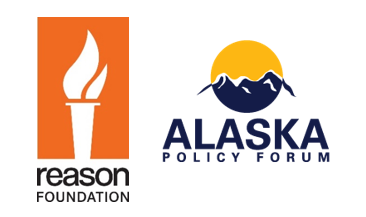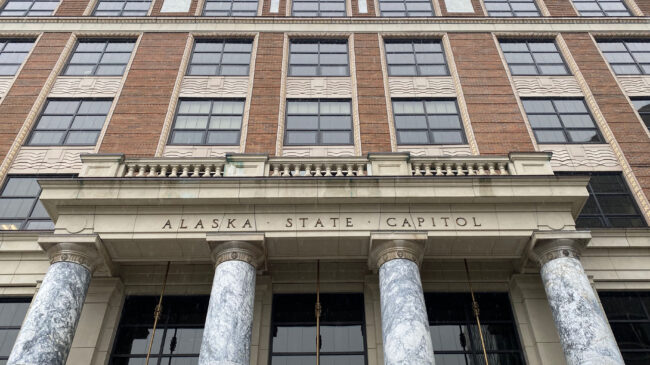
This is a review of Alaska’s defined contribution retirement plan (DCR), also referred to as Tier 4, and the Alaska Supplemental Annuity Plan (SBS-AP). The comments relate to the efficacy of these plans for employees’ retirement, with an emphasis on public safety employees.
In this analysis, we’ve used the leading best practices from our policy brief, Defined Contribution Plans: Best Practices in Design and Utilization, outlining the gold standard as a measure of the two plans. Alaska’s retirement plans meet best practices in some areas but need some improvement in other areas, as described below.
Summary of Alaska’s Pension Plans
- Alaska Defined Contribution Retirement Plan (DCR): The DCR is a retirement plan within the Public Employees’ Retirement System (PERS). It is a defined contribution, multiple-employer public employee retirement plan established by Alaska to provide pension and post-employment health care benefits for eligible state and local government employees hired after 2006.
As of June 30, 2020, 152 employers were participating in PERS-DCR. According to the state’s annual report for the fiscal year ending in June 2020, there were 23,478 plan members, of which 21,243 were general employees and 2,235 were peace officers and firefighters.
There are three benefit components:
- DCR Plan—a 401(a) plan
- The PERS Retiree Medical Plan (RMP), which provides retiree health insurance (after 25 years of service and retirement directly from active employment) and a Healthcare Reimbursement Arrangement Plan (HRA)
- The Occupational Death and Disability (OD&D) Plan, which pays 50% of covered compensation (nontaxable)
- Supplemental Annuity Plan: This plan, SBS-AP, is a defined contribution plan that was created under Alaska statutes effective January 1, 1980, to provide benefits in lieu of those provided by the federal Social Security system. All state employees who would have participated in Social Security if Alaska had not withdrawn from it now participate in SBS-AP instead. Other Alaska employers whose employees participate in PERS and meet other requirements are eligible to have their employees participate in SBS as provided by Alaska statute. There were 21 participating employers in SBS-AP, including the state, and 49,552 participants in the plan as of June 30, 2021.
Note: Teachers covered under the Teachers Retirement System (TRS) are not eligible to participate in the SBS-AP. Not all public safety employees of political subdivisions participate in the SBS-AP, only those of the state and the few political subdivisions that have adopted it. According to the Alaska Division of Retirement and Benefits, just 25 of 199 PERS employers offer access to the SBS-AP.
Definition of Plan Objectives
Employee communication materials for the plan continually refer to meeting employee objectives, but a well-defined pension plan objective is not clearly stated in authorizing statutes or the primary informational handbook. The defined contribution plan handbook says: “Your retirement plan is designed to keep pace with your career; on your very first day of work you are in control. Your defined contribution retirement account is participant-directed, requiring your attention and understanding as you choose investment funds that fit your needs.”
While this is a welcome approach, there ideally would be a more explicit statement of what the pension plan is working to achieve on behalf of participants. The SBS-AP handbook does not address the plan’s purpose other than noting it exists instead of Social Security.
Communication and Education
The DCR plan and SBS-AP make various communication and education services available to participants. Services range from group seminars and meetings to individualized advice and guidance offerings. Individual participants should be cautious about using higher-priced managed account services that may not be necessary.
Automatic Enrollment
New employees are automatically enrolled in the plan, and contributions are directed into an age-appropriate target date fund until the employee makes a positive election. This approach satisfies the auto-enroll best practice.
Contribution Adequacy
Given that state and most political subdivision public employees in Alaska do not participate in Social Security, total contribution rates (employer plus employee) of 13% for PERS employees and 15% for TRS employees are inadequate on their own to adequately fund a retirement benefit that will enable a retiree to maintain their standard of living following a career of employment.
Fortunately for PERS employees, when SBS-AP benefits are considered, the total employer and employee contribution rates increase by 12.26% for a total of 25.26% for PERS employees. Additionally, 3% of pay is contributed to the HRA benefit.
TRS employees, however, do not participate in the SBS-AP, leaving their 15% DCR contribution substantially below the target contribution range of 18-25% for those not covered by Social Security.
There is also a potential major shortcoming in the Alaska DCR for public safety employee participants. Public safety employees generally retire at an earlier age than general classification employees because of the requirements of their jobs. Funding an earlier retirement date requires a higher contribution rate. It is generally accepted that without Social Security and earlier retirement ages, the total contribution rate for police and fire employees should be a minimum of 30%. With public safety workers participating in PERS and not participating in Social Security, the combined 25.26% contribution rate is well below the suggested 30% contribution.
There is also a chance that some public safety employers are not offering the SBS-AP benefit, which would put those police and firefighters woefully below suggested levels in contributions.
Retirement-Specific Portfolio Design
The investment menu for Alaska’s DCR plan generally meets best practices. Single-choice target date options are available, and for individual participants desiring a more customized portfolio, the plan offers a range of advice and guidance services. The primary menu includes 16 options, including mutual funds and Alaska-managed balanced funds. In plan annuity, accumulation period options are not offered.
Portable Benefits
Accumulations attributable to employee contributions are, of course, immediately vested. Accumulations attributable to employer contributions are not fully vested for five years. Vesting is on a pro-rated scale beginning with 25% vested after two years of service and growing to 100% after five years. Full and immediate vesting of these employer contributions would be preferred to meet the needs of today’s more mobile workforce. A five-year vesting timeline is especially long for a defined contribution retirement plan.
Distribution Options
The plan makes various distribution options available ranging from leaving the assets in the plan to various fixed-period and lifetime annuities. The offerings cover best practices, but other than distributions required by regulations, there are no requirements for a lifetime income.
Disability Coverage
Alaska’s DCR plan presents itself as a hybrid plan because of the non-retirement benefits it provides to public employee participants. These benefits include disability and retiree health care. These benefits appear to be generous and satisfy best practices.
Sept. 14, 2022—Editor’s note: This piece has been corrected to reflect the fact that TRS members are not eligible to participate in the SBS-AP Social Security replacement plan.
For more information and an in-depth scorecard, please see:
Stay in Touch with Our Pension Experts
Reason Foundation’s Pension Integrity Project has helped policymakers in states like Arizona, Colorado, Michigan, and Montana implement substantive pension reforms. Our monthly newsletter highlights the latest actuarial analysis and policy insights from our team.


